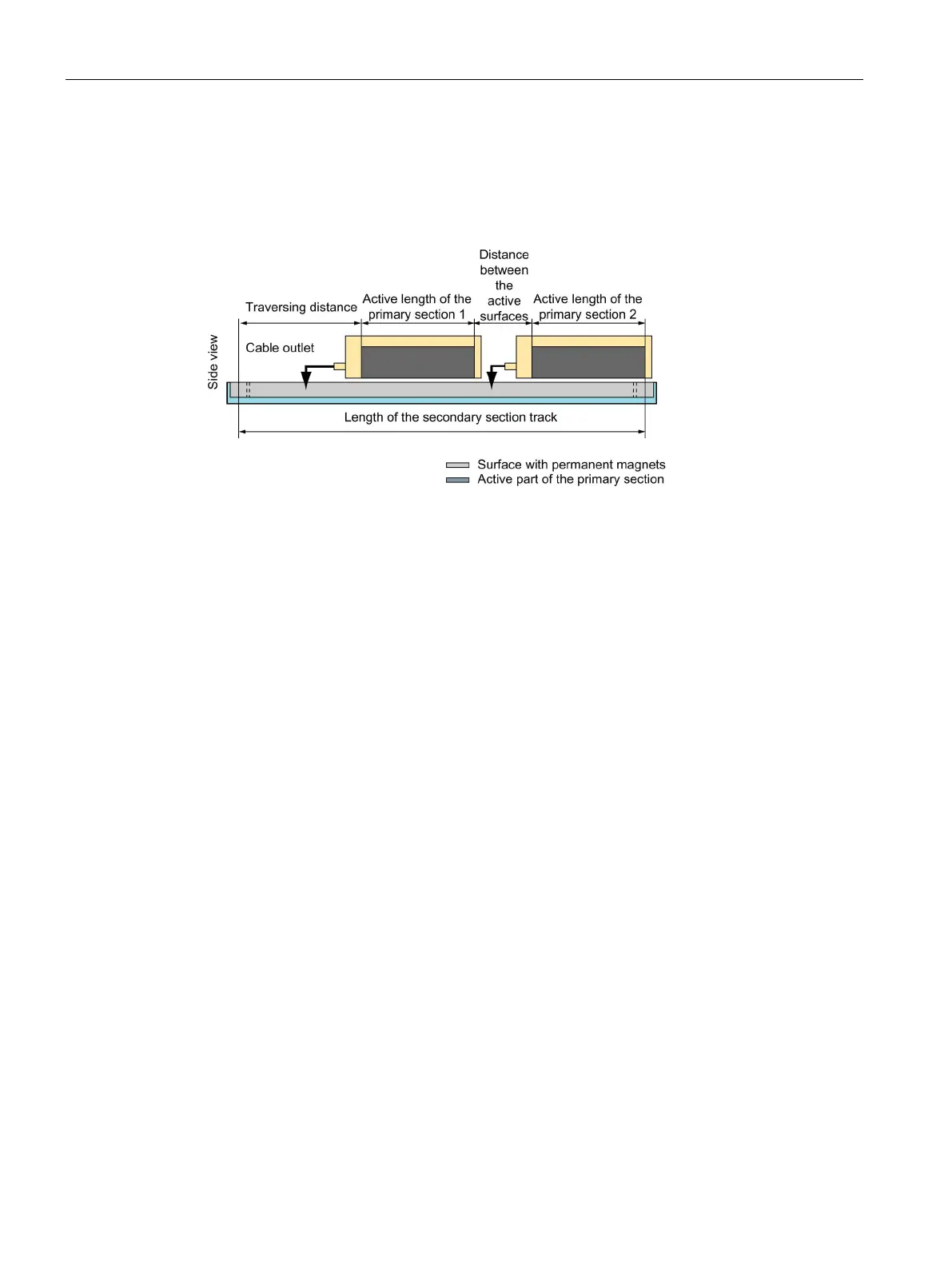Configuration
5.2 Configuring workflow
1FN3 linear motors
118 Configuration Manual, 10/2018, 6SN1197-0AB86-0BP2
Several primary sections on a secondary section track
If several primary sections are to be mounted on a secondary section track, the required
length of the secondary section increases by the active length of the additional primary
sections and the distances between them, see the figure below:
Figure 5-11 Determination of the length of the secondary section track with several primary sections
If the various primary sections are operated from separate drive systems with separate
measuring systems, for example, for gantry or master/slave operation, the distance between
the primary sections is limited only by mechanical constraints, such as the length of the
connecting plugs and the bending radii of the cables. As long as the primary sections are
being electrically operated in parallel on a drive system, the pole position of the two primary
sections must be the same. The distance can only accommodate certain values.
Specifying the number of secondary sections
The total required length of the secondary section track is calculated from the individual
secondary sections. The available lengths are listed in the motor data.
Operation in the area of reduced magnetic coverage
Fundamentals and information
If the primary section moves beyond the ends of the secondary section track, the motor force
is reduced.
The available motor force is almost proportional to the percentage of the surface covered by
magnets over the complete magnetically active surface of the primary section. Depending on
the extent of the frictional forces in the guides, the motor force of the drive may be too low to
independently return to the secondary section track if the degree of coverage is too low.
External force is then required to return to the track.
The degree of coverage should not be below 50% in order to ensure that the drive can
independently return to the secondary section track.
The phases are unsymmetrically loaded, especially at high speeds in the range of reduced
magnetic coverage. This leads to additional heating.

